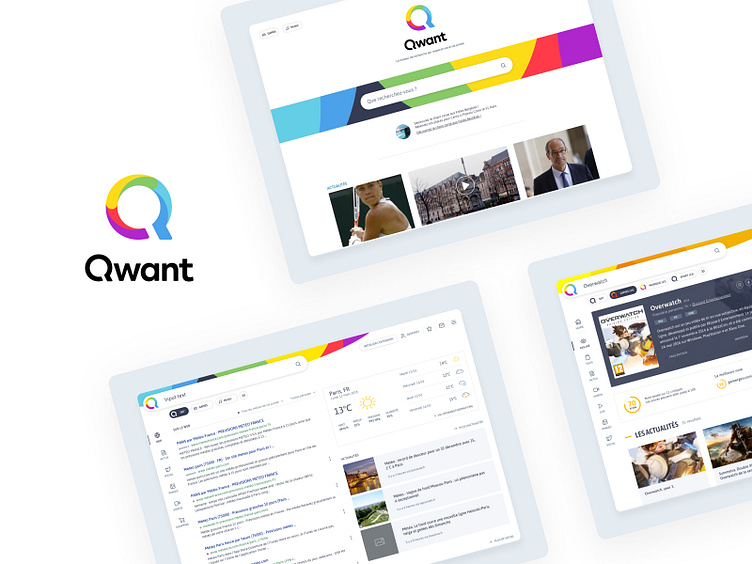Qwant Search Engine
Qwant Search Engine
Role : Lead product designer
Context
In 2016, I joined the startup Qwant as Lead Product Designer. Qwant is a European search engine launched in 2013. This search engine guarantees the privacy of its users by not tracking their activity for advertising purposes, and prohibits any resale of personal data. Impartiality in the display of results is also a strong value and a differentiating element vis-à-vis its competitors. I was invited to join the adventure in order to create the very first Product / Design team with Pierrick Thébault and initiate the establishment of a product culture that had been in its infancy until then. We have recruited 4 product designers and two developers with the aim of industrialising the design, redesigning the search engine interfaces and creating new functionalities.
Design process
Even though Qwant users are not tracked for advertising purposes, the business model is mainly based on contextual advertising and affiliation.
Our team's goal was twofold, to convert new, younger users and to increase ad revenue.
But without tracking, it was difficult to work on tangible data, and Qwant's lack of user feedback led to many product iterations being carried out blindly. We then had to find a way to make usage measurable and collect information that would allow us to meet our objectives.
We therefore worked in partnership with the Lutin laboratory to conduct tests on representative samples of the population. The collection of eye tracking data and verbatims allowed us to identify the points to improve in terms of brand image and ergonomics.
We identified 3 issues:
How to improve the reading of search results ?
How to facilitate exploratory research by theme ?
How to modernize the interface to make it more usable and more desirable for the youngest ?
Improved readability of search results :
To improve the readability of the page, we decided to replace the old three-column layout (web results, news and social networks) with a two-column layout. "Instant Replies", originally placed at the top of the page, is now positioned at the top of the right column, reducing interference with search results and improving readability.
Our goal was to maintain the search engine's characteristic "F" reading pattern, so as not to confuse users of other search engines (Google, Bing, etc.)
Facilitate exploratory research by theme :
The creation of a better navigation being at the heart of the design of this new version of Qwant, we have therefore created a navigation allowing to carry out a 360° search by default (multi-theme), but identifying the main theme and proposing the user a visualization of the data within a dedicated universe. There were three thematic universes: music, video games and sport.
Modernize the interface :
To modernize Qwant's brand image and interface, we worked closely with the Brand Design department. The new brand identity has been designed to resonate with the user expectations identified during the research work, and thus be part of the design logic of the new interface.
Industrialization
We have designed a design system to facilitate the deployment of new features, gain in speed of execution and improve communication with development teams.
When the new version of Qwant was released, we published an SUS satisfaction survey and obtained 85% satisfaction. Revenues generated by the engine have increased.








